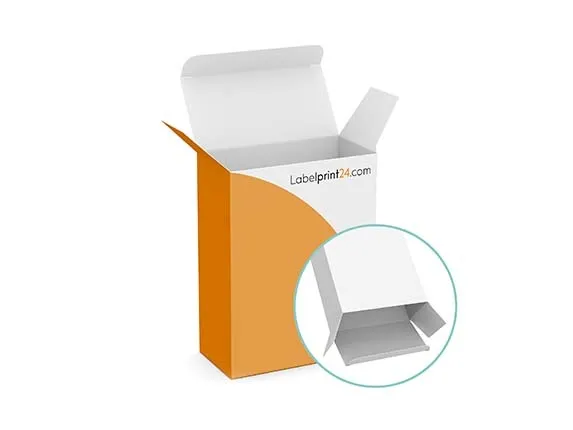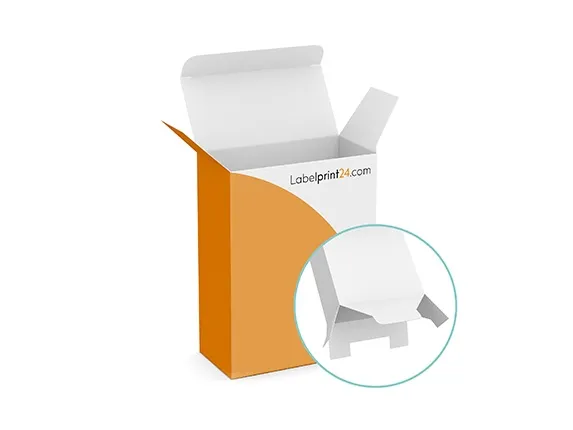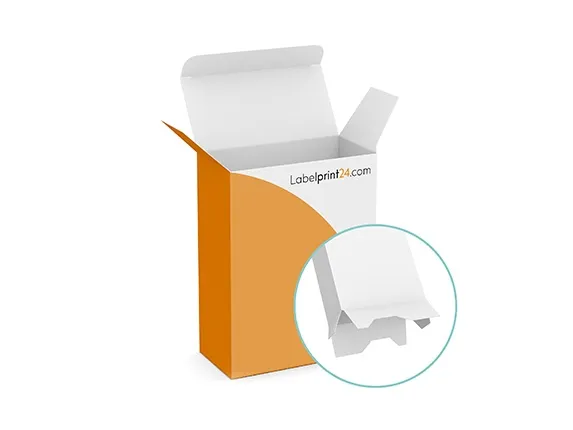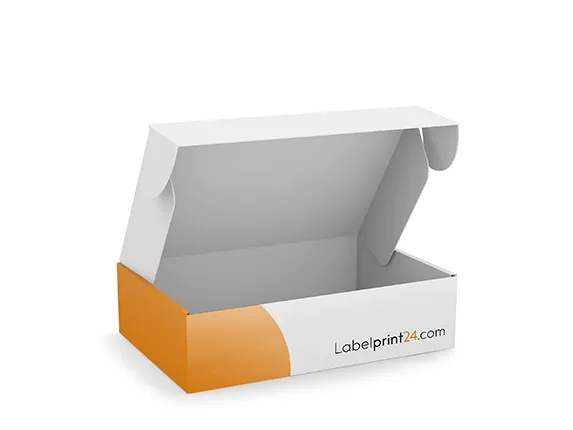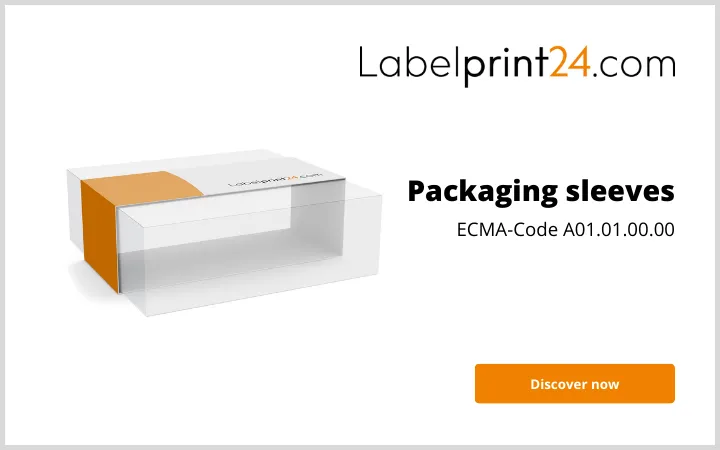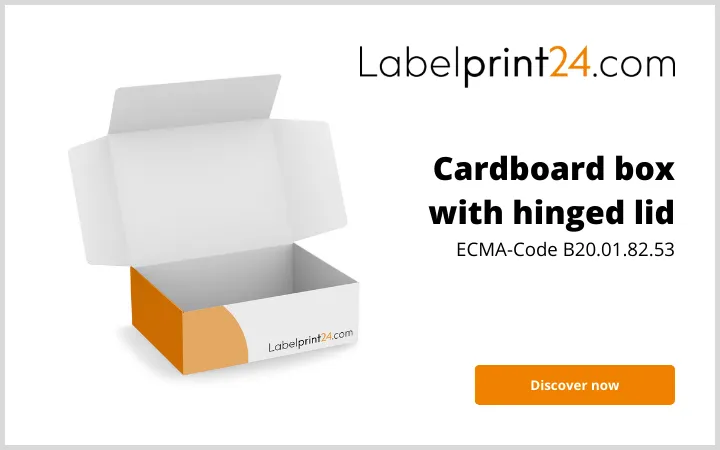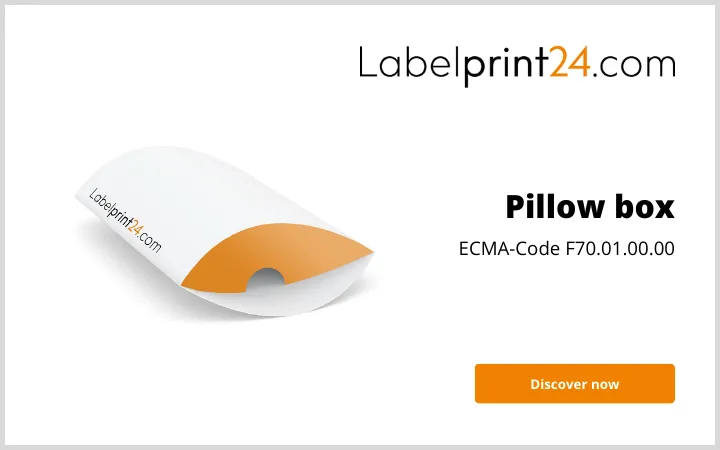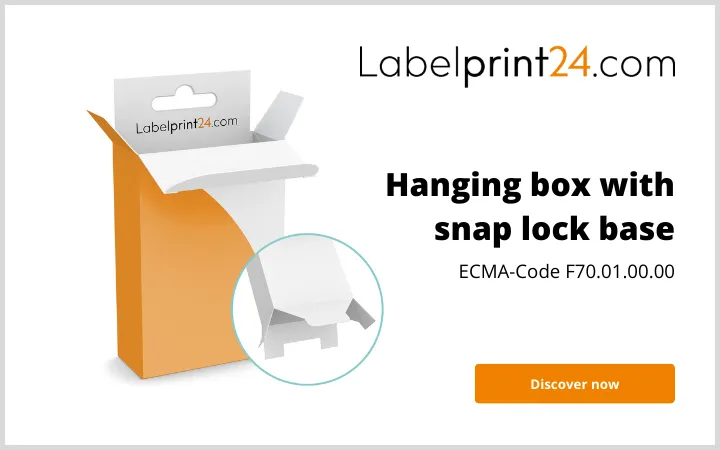
ECMA Code - A code says more than a thousand words
The abbreviation ECMA stands for European Carton Makers Association. The association is an association of European companies in the folding carton and cardboard industry.
The ECMA is a private standardisation organisation with its headquarters in The Hague and a branch office in Brussels. It now has about 500 members with over 60,000 employees from almost all countries in the European Economic Area. This means that over 80% of the sales volume is organised in the ECMA interest group. Heidelberger Druckmaschinen AG, the European market leader for printing presses, is a member of the umbrella organisation.
The structure of the ECMA Code
The ECMA Code groups together a wide variety of folding cartons and carton board construction types. There are the following groups:
- Group A: Rectangular folding boxes with longitudinal seam gluing
- Group B: Rectangular folding boxes without longitudinal gluing, folded
- Group C: Non-rectangular folding boxes with longitudinal gluing
- Group D: Non-rectangular folding boxes without longitudinal gluing
- Group E: Folding boxes with product reference or integration
- Group F: other folding boxes
- Group X: Closures/auxiliary devices for all groups.
| Group | Variable 1 | Variable 2 | Variable 3 | Variable 4 | X-Funktion (optional) |
| A | Bottom closure | Lid closure | Area ground articulation | Surface cover linkage | |
| B | Basic form | Closure system | Number of dust flaps | Cover type | |
| C | Body | Basic form | Bottom closure | Lid closure | |
| D | Glued Unglued | Basic form | Closure system | Cover type | |
| E | Product | Closure system | None (00) | None (00) | |
| F | List | List | None (00) | None (00) | |
| G | Liste (X-Function) | ||||
Discover our printed folding boxes for corporate clients
Example: Folding box with tuck-in flap ECMA A20.20.03.01
In order to understand the structure of the ECMA code, the standard version of the folding box with tuck-in flap is used as an example. The folding box complies with the ECMA A20.20.03.01 standard and can be easily configured and ordered by you in the Labelprint24 Shop with your desired dimensions. But what exactly does A20.20.03.01 actually say?
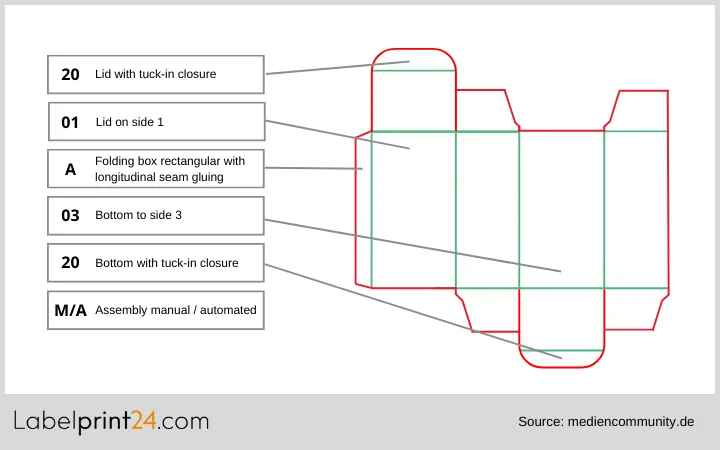
The ECMA code follows a certain logic that makes sense and is understandable. In total, the code consists of five positions, which are explained below.
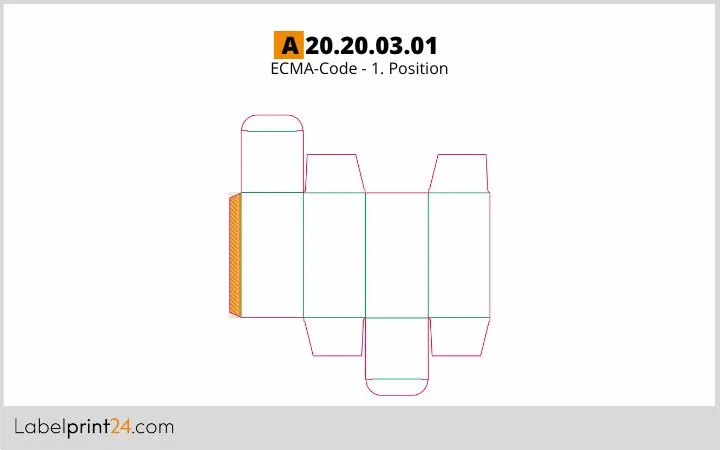
The first position defines the group of the folding box and therefore consists of a letter. It can be group A, B, C, D, E or F, as group X only includes packaging additions and not complete folding box constructions. Our exemplary folding box order is a custom-made carton of group A: Rectangular folding box with a longitudinal seam gluing. This is easily recognisable by the rectangular base and the small gluing area in the graphic.
At the second position, the closure system of the packaging bottom is determined. For this purpose, 19 different bottom closures are listed in the catalogue with the corresponding numbers. These and also the following positions always consist of a pair of digits. Since our folding box is to have a tuck-in closure, the ECMA code has the number 20 as the second variable.
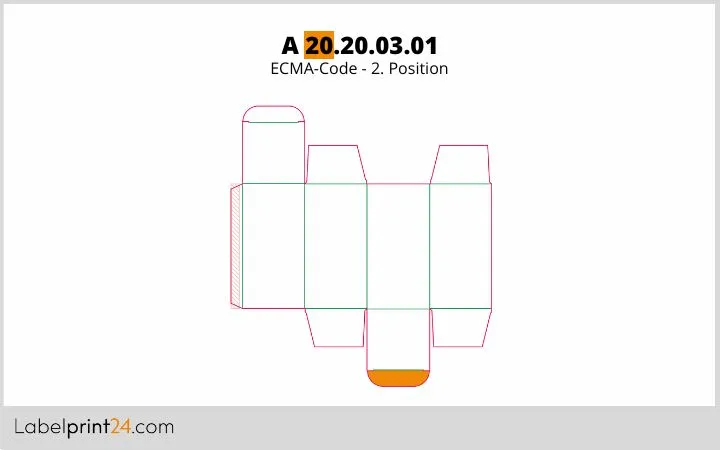
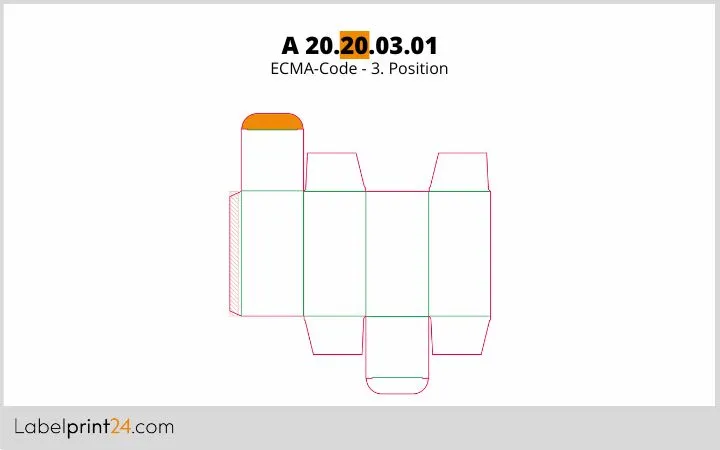
The third position is the equivalent of the previous one, with the difference that now the lid closure system is defined. There are 21 lid closures to choose from, which can be combined with all bottom closure systems with a few exceptions. For our false box example, the number 20 is also in the third position, as the tuck-in closure is selected for both the lid and the base.
The fourth position makes it visible on which side of the construction sketch the packaging base is located. For this purpose, the surfaces of the packaging are numbered. In our example, this is evident because the edge of the bottom surface is on the third rectangular surface of the construction sketch, which is why there is an 03 in the code. In the case that it should be one without a bottom or lid, this and the third position can be given 00. This is the case, for example, with sleeves.
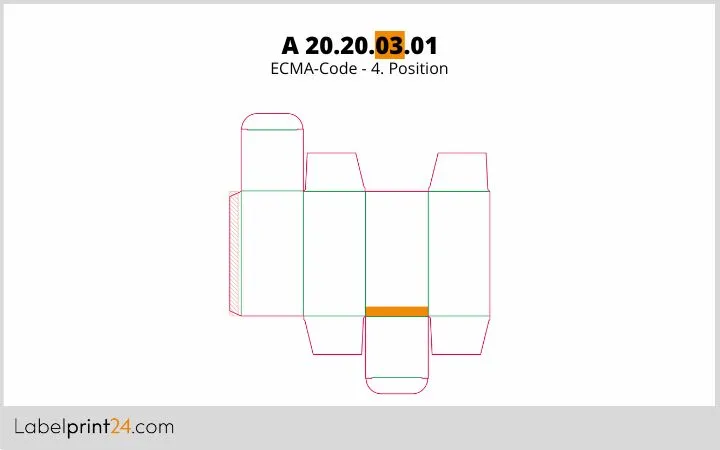
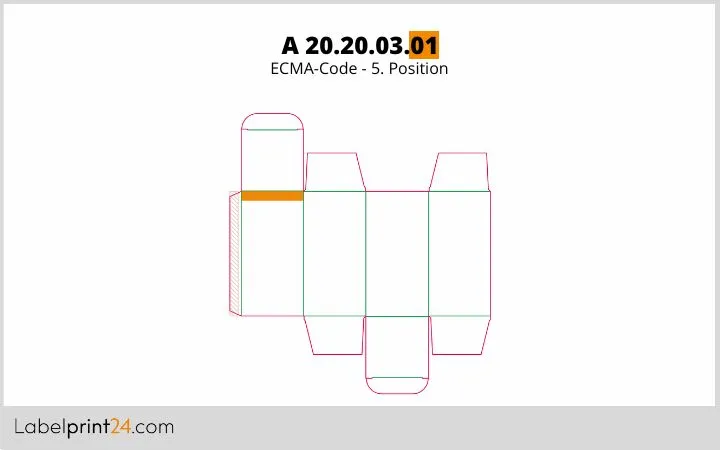
At the fifth position, the identical principle applies to the packaging lid. In the example, the lid of our folding box is located on the first rectangular surface in the design sketch, as indicated by the digits 01 in the ECMA code.
Finally, there is position X, which is optionally added at the end of the code. In this group are closures and auxiliary devices for all groups. This is a supplementary variable that can be combined with groups A, B, C, D and F. There are 45 different closures and auxiliaries defined in the ECMA catalogue.
If required, an appendix can be added to the code to indicate whether the folding box is assembled or erected manually or automatically. The following display options are available for this purpose:
M: manual assembling / erecting
A: automatic assembling / erecting
M/A: manual or automatic assembly/erection
M+A: requires manual and automatic assembly/erection.
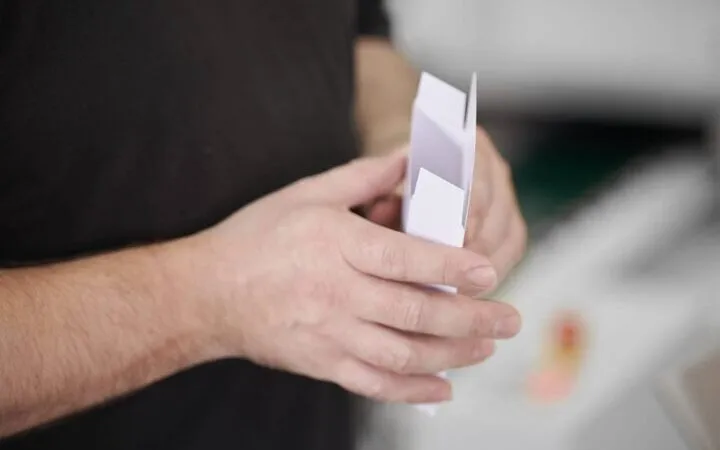
Popular Packaging according to the ECMA standard
As you can imagine, the number of possible number and letter combinations that make up the ECMA code is very large. Each combination is used to designate a specific type of box. You already know the following packaging according to the ECMA standard:
A product for group A is, for example, the cardboard slipcase as a sleeve. This is used in a variety of ways and has the ECMA code A01.01.00.00. In the retail trade, for example, the cardboard slipcase is put around plastic packaging of ready-made salads.
The cardboard box from group B, with ECMA code B20.01.82.53, is frequently used in the cosmetics industry. The product is often used as outer packaging for a high-quality product presentation.
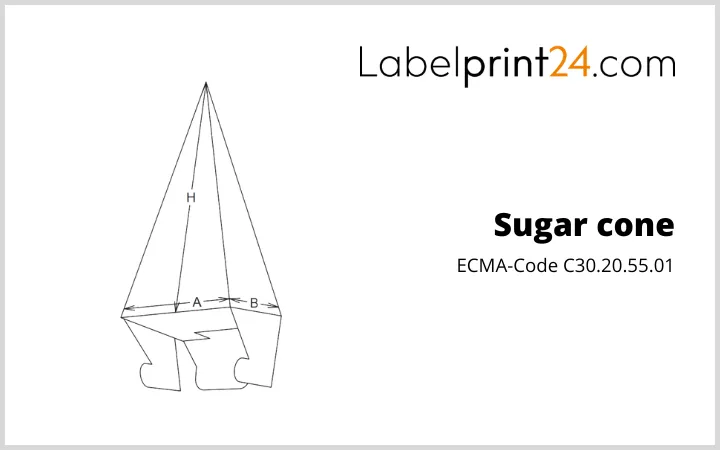
A well-known representative of group C is the square sugar cone with the general ECMA code C30.20.55.01. Depending on the dimensions, this can be used to please smaller and larger school children.
A common example of packaging for group D is the hexagonal folding box of the candy mix "Celebrations", with ECMA code D20.50.20.00.
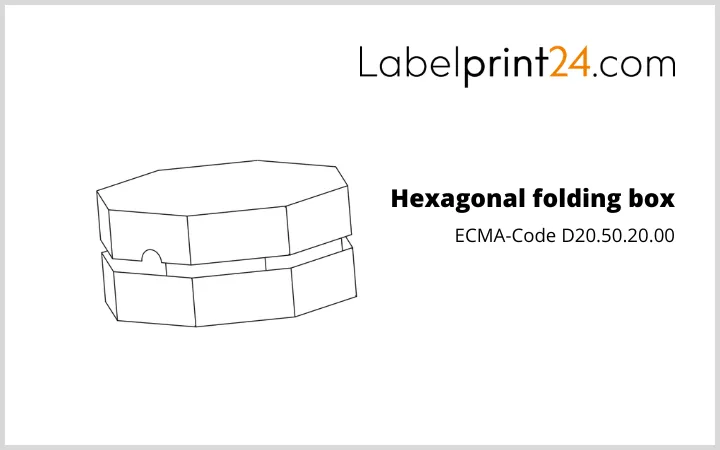
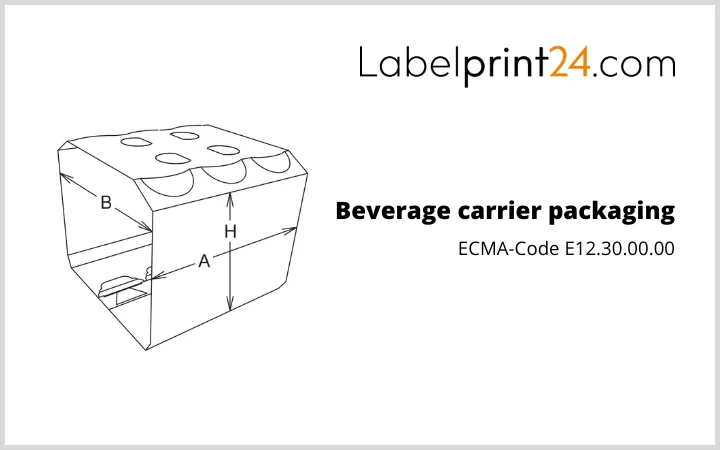
Group E includes, for example, carry packs of many beverages can suppliers, which are marked with the code E12.30.00.00. A six-pack can be easily transported by the folding packaging with carrying device and literally facilitates the buying experience. In general, it can be said that group E packaging has a close product reference.
Pillow boxes are often made by children as gift packaging. They belong to group F and have the general ECMA code F70.01.00.00. For a small promotional gift or give-aways, the so-called "Pillow box" is exactly the right packaging.
For optimal presentation of the products, folding boxes often have a hanging device. This is one of the extensions represented by group X. In the Labelprint24 shop you will find the hanging box with plug-in bottom, which is one of many possible combinations.
The relevance of ECMA
With globalisation, the need for standardisation of products grew in the label, folding carton and cardboard industry in order to be able to communicate better internationally. In this context, the ECMA was founded in 1960 and set important guidelines for the industry just seven years later. In the meantime, the standards are known beyond the European borders. ECMA has a unifying effect and its entire approach is geared towards bringing the industry's players to the same table.
... offers platforms for networking: Through congresses, seminars and regular webinars, industry members can exchange information, share experiences and discuss current topics. The ECMA Congress, for example, is one of the most important events in the folding carton industry.
... regulates government affairs: ECMA acts as an advocacy group before national governments and the European Commission. Representatives participate in workshops and consultations organised by public bodies. In case of regulatory and legislative changes, ECMA shares information with members.
... promotes benchmarking and information exchange: Regardless of the size of the company, ECMA provides expert networks and industry platforms for members.
... determines industrial guidelines: ECMA established some groundbreaking guidelines for the industry. These have so far included:
- the ECMA Code
- the ECMA GMP 2.0 with Seal of Conformity (for the food industry)
- the ECMA Best Practice Guidelines (for the pharmaceutical industry)
- the ECMA Braille Standard.
... cooperates with other associations: ECMA cooperates with other European associations in the industry. These include the following organisations:
- Confederation of European Paper Industries (CEPI)
- International Confederation of Paper and Board Converters in Europe (CITPA)
- Paperboard Packaging Council (PPC)
- Pro Carton.
The ECMA Code: The heart of the organisation
After the founding of the association, the catalogue with the concept of the ECMA Code was published in 1967. The catalogue clearly summarises different folding box models. Each model is assigned a combination of numbers and letters, which is the ECMA code. Clients forward this code, with the desired dimensions, to the manufacturer. The order can thus be processed easily, as communication is facilitated and language barriers can be overcome. The use of the code therefore not only saves time, but also costs, because communication errors quickly increase production costs. Taken as a whole, the catalogue forms a non-binding standard reference network for the entire industry, which is updated at regular intervals.
These groupings are of a general nature. The code neither specifies dimensions nor details of packaging constructions. You will therefore not find folding boxes with special closures or carrying devices in the catalogue. However, the code is flexible and has modulable building blocks that make it possible to communicate wishes of this kind through the code. The exact structure of the code is explained below.
The advantages of the ECMA Code at a glance
- current consensus for folding carton production is recorded and defined
- easy communication and low language barriers
- catalogue available in five languages (English, German, French, Spanish, Italian)
- high flexibility regarding product extensions and individual size requirements
- can be combined with CAD applications (software used in production)
- independent of public authorities
- non-binding system.
Conclusion
The European Carton Makers Association (ECMA) significantly shapes the folding carton industry as a private standards organisation. Under the name ECMA, the entire industry comes together around one table. The ECMA code is now internationally known as a standard and is seen as a kind of seal of quality. It shortens communication channels and combines simplicity, clarity and flexibility, which makes it relevant for the future as well.



